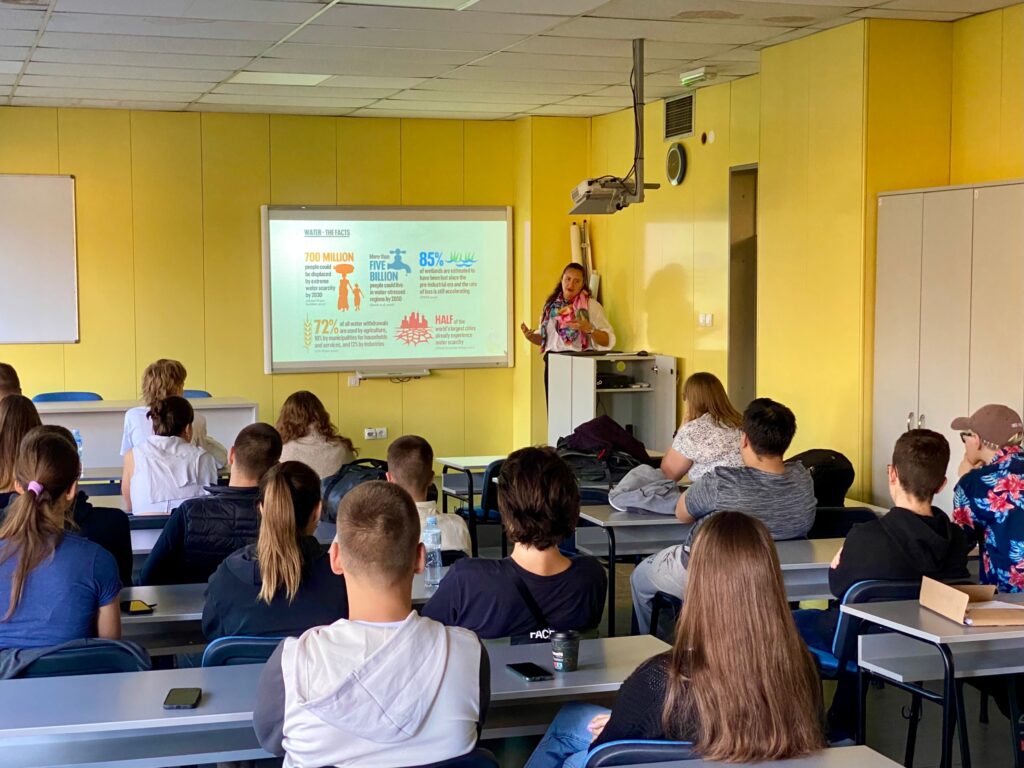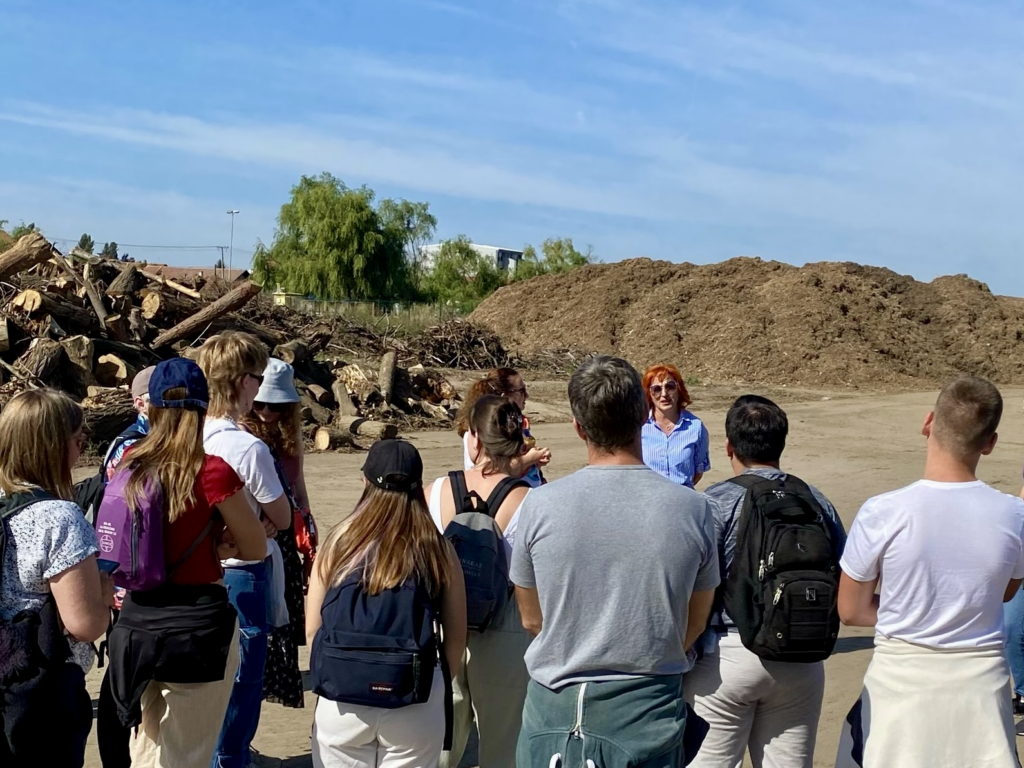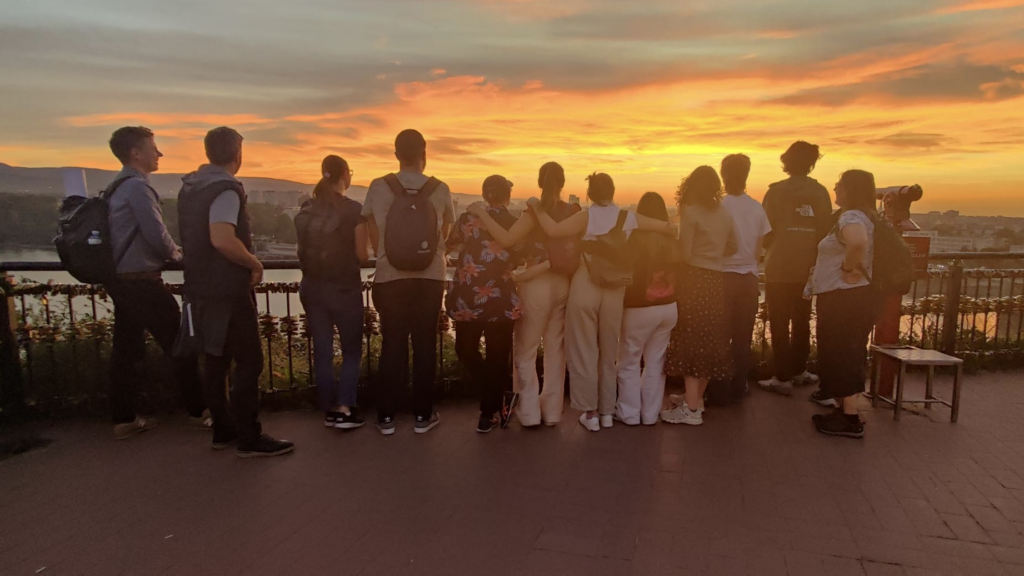How does circular economy look in Serbia?
Levi – Youth assembly participant from Denmark

The GreenSCENT Youth Assembly Four met in Novi Sad in the beginning of October 2023. The meeting spanned an entire weekend, and I stayed longer to enjoy the culture. Throughout the weekend, we then got the opportunity to learn more about each other and why we applied to GreenSCENT. During the weekend we got to enjoy delicious food, both local and some international food, we worked with circular economy, and we acquired valuable insights into the framework of circular economy and put our thoughts and ideas into how we can improve the framework and make it more understandable for everyone. Furthermore, we discussed the importance of the selected competence in GreenSCENT. One of the exciting things was the collaboration with individuals of different ages and backgrounds to address the significance of global issues, such as circular economy’s importance when you need to become more sustainable.
We met up on Friday the 6th and did some social activities to get to know each other better; we also got an introduction to what we were to have on the agenda for our stay. We got introductions to what we would work with and how we would do it; one such thing was the citizen journalism we were to do. It was exciting to try out a different form of writing because, in citizen journalism, there aren’t rules, so we were allowed to write about whatever our heart desired in terms of circular economy.
We visited NS Seme: The Institute of Field and Vegetable Crops on Saturday and learned about how they do analysis of soil to optimize the use of fertilizers. I found it fascinating that the process of analyzing the soil’s nutrients and pH levels to determine the ideal ratio of fertilizers was essential to get the optimal result of the fertilizers so farmers don’t use it in amounts that become toxic for the land. I learned that circular economy’s principles also can be applied to agriculture as well, which can help reduce waste and improve sustainability.
Meeting the Open Innovation Challenge winners during the trip
We were delighted to have the privilege of acquainting ourselves with the winners of the Open Innovation Challenge (OIC), and to gain insights into their ground-breaking idea and how far they were in the implementation. They gave us a presentation about their product “Smećko Srećko” which would make recycling into an experience that would be both enjoyable and an engaging adventure for all ages. Their presentation was an inspiration and I eagerly anticipate the remarkable impact this courageous team will make in the area of recycling.

Working with circular economy was a fascinating experience and made me realize that even though humans recycle individually, it needs to be a collective goal where everyone needs to do their part regardless of location, age and background. We had chosen to work with circular economy because it’s crucial to know about the “9 R’s” (recycle, reuse, rethink, repurpose, reduce, repair, refuse, refurbish, recover and remanufacture) and the importance of sustainability, it’s also important to understand that this isn’t something that can happen overnight and also not something local since you need to take action on a global level.
On Sunday we looked over the framework and gave critiques and new ideas to make it more understandable and phrased in ways that make sense and still fit under the circumstances of circular economy. We learned about how implementing circular economy practices not only benefits the environment but also how it can improve economic growth.
An eye opening experience with sustainability
I realized that being engaged in global issues is a responsibility that I will carry with me and work towards making more sustainable choices. During the days in Novi Sad, we learned a lot about how sustainability provides us with a comprehensive understanding of the impact our actions have on the world. We had some interesting lectures about Responsibility and the importance of circular economy. It inspired me and made me think more critically about long-term causes and the consequences, which also made me want to promote a mindset where the “9 R’s” become a daily basis.
Overall, the trip was an eye-opening experience where I not only learned about the importance of how we act not only in our own homes but also in a broader environment when we want to become more sustainable. It also felt rewarding to work with people who have the same understanding as myself about circular economy, even though we all come from vastly different backgrounds. This is a trip I will cherish with all my heart and think back on with fond memories.

